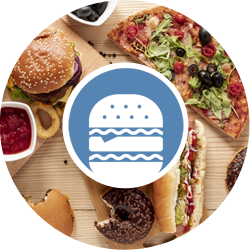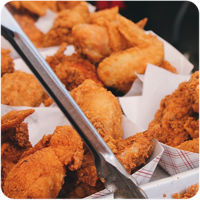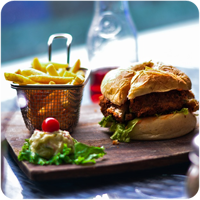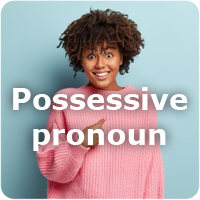Het arrangement 8.4 Fast food - tto123 is gemaakt met Wikiwijs van Kennisnet. Wikiwijs is hét onderwijsplatform waar je leermiddelen zoekt, maakt en deelt.
- Auteur
- Laatst gewijzigd
- 11-05-2025 18:08:28
- Licentie
-
Dit lesmateriaal is gepubliceerd onder de Creative Commons Naamsvermelding-GelijkDelen 4.0 Internationale licentie. Dit houdt in dat je onder de voorwaarde van naamsvermelding en publicatie onder dezelfde licentie vrij bent om:
- het werk te delen - te kopiëren, te verspreiden en door te geven via elk medium of bestandsformaat
- het werk te bewerken - te remixen, te veranderen en afgeleide werken te maken
- voor alle doeleinden, inclusief commerciële doeleinden.
Meer informatie over de CC Naamsvermelding-GelijkDelen 4.0 Internationale licentie.
Aanvullende informatie over dit lesmateriaal
Van dit lesmateriaal is de volgende aanvullende informatie beschikbaar:
- Toelichting
- Deze les valt onder de arrangeerbare leerlijn van de Stercollectie voor Engels voor tweetalig onderwijs, leerjaar 1,2 en 3. Dit is thema 8 'Food and drink'. Het onderwerp van deze les is: Fast food. In deze les staan fastfood centraal waarbij gekeken wordt naar wat fastfood is (bijv. crispy fried chicken). Ook wordt er gekeken naar wat voor ongezond eten er in de schoolkantine wordt verkocht. In de grammaticaopdracht worden de possessive pronouns behandeld.
- Leerniveau
- VWO 2; HAVO 1; VWO 1; HAVO 3; VWO 3; HAVO 2;
- Leerinhoud en doelen
- Engels;
- Eindgebruiker
- leerling/student
- Moeilijkheidsgraad
- gemiddeld
- Studiebelasting
- 1 uur 40 minuten
- Trefwoorden
- arrangeerbaar, engels, fast food, ongezond eten, possessive pronouns, schoolkantine, stercollectie, tto123
Gebruikte Wikiwijs Arrangementen
VO-content Engels. (2020).
1.2 Preferences - tto123
VO-content Engels. (2023).
8.4 Fast food - hv12

 The subject of this period is fast food.
The subject of this period is fast food.

 How to make crispy fried chicken
How to make crispy fried chicken
 Fast food
Fast food Study the vocabulary. (10 minutes)
Study the vocabulary. (10 minutes)
 Have a look at the knowledge base: Possessive pronoun.
Have a look at the knowledge base: Possessive pronoun.
 A debate about fast food
A debate about fast food An essay about fast food
An essay about fast food What have you learnt in this period?
What have you learnt in this period?
